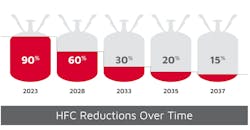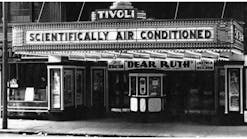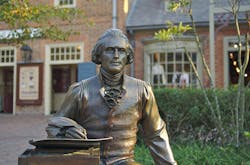In January 2015, I posted about passive cooling. It is not a new concept, I wrote, citing Thomas Jefferson’s home, Monticello, construction of which was begun in 1769, as an example of passive-cooling strategies. Passive cooling is a significant component of what we now call bioclimatic architecture. Bioclimatic architecture connects a building’s design with nature, using climate and environmental conditions to achieve interior thermal comfort. It is based on such principles as achieving maximum thermal performance with minimal environmental impact; using low-energy-content building materials; reducing HVAC, lighting, and plug-load energy requirements; and utilizing renewable-energy solutions.
Here in South Florida, ours is a truly tropical climate, while the rest of the state’s generally is considered humid subtropical. Since the introduction of air conditioning in Florida more than 100 years ago (before Carrier’s patent was filed), our dependence on A/C has become firmly established, and we have not seen a lot of bioclimatic architecture in our building designs. Air conditioning has continued to develop significantly in places such as Southeast Asia, another subtropical climate. Southeast Asia, however, is seeing a resurgence in bioclimatic architecture, largely because of the efforts of T3 Architecture Asia. The Asian branch of French-based T3 Architecture, the firm specializes in green building and sustainable urban development.
T3 has been designing projects using bioclimatic architecture since 2005. That’s the year it built 350 units of affordable multifamily housing in a low-income neighborhood in Ho Chi Minh City. The design employed covered open-air corridors, ventilated roofs, fiberglass insulation, and natural materials to provide ample natural lighting and ventilation in the non-air-conditioned building. Since then, T3 has used bioclimatic designs in several luxury hotels in Cambodia and Myanmar, a restaurant in Ho Chi Minh City, and its own offices. According to T3 partner Charles Gallavardin, T3’s bioclimatically designed buildings typically have interior temperatures approximately 9°F lower that the outside ambient temperature, using only natural ventilation and limited ceiling fans.
More recently, U.S.-based Perkins+Will has been exploring bioclimatic design strategies. It designed the nearly 480,000-sq-ft Shanghai Natural History Museum as a bioclimatic building that uses an intelligent building skin to maximize daylighting and minimize solar heat gain. The museum operates approximately 15 percent more efficiently than a standard-design museum. Although the building’s exhibit spaces are air-conditioned to protect artwork and artifacts, public areas are naturally ventilated using automated windows and skylights. A courtyard pool provides evaporative cooling, while interior building temperatures are controlled by a geothermal system. Rainwater collected from the building’s vegetated roof is stored in a pond along with recycled grey water.
The old adage that what goes around comes around certainly applies here. Bioclimatic architecture is a design approach that’s been around for hundreds of years and once again is being seriously investigated.










